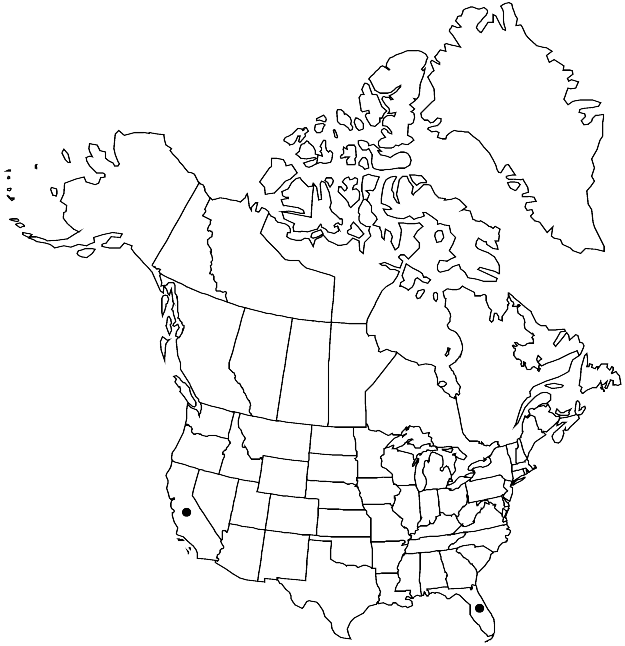Imbribryum microchaeton
Phytologia 89: 112. 2007.
Plants medium-sized, pale shiny green to brown-green. Stems 0.5–2 (–3) cm, not julaceous, with metallic sheen, older stem sometimes densely radiculose. Leaves rigid, strongly imbricate when dry, pale shiny green, brown with age, broadly lanceolate to narrowly ovate, weakly concave or flat, 1–3 mm; base not decurrent; margins strongly revolute throughout, sometimes plane distally, entire to finely serrulate, limbidium present; apex acute to acuminate, not cucullate; costa green, short to moderately long-excurrent, awn slender; basal row of pigmented cells absent; proximal laminal cells abruptly rectangular, 2–3: 1; medial and distal cells vermicular to elongate-hexagonal, 60–90 × (8–) 10–12 µm, 6–8: 1, walls strongly incrassate, parallel to costa. Specialized asexual reproduction common, by rhizoidal tubers on rhizoids on stem, red or redbrown, 100–200 µm. Seta ± straight, brown to redbrown. Capsule inclined to nutant, brown, elongate-clavate, 4–6 mm, neck long, distinct. Spores 16–20 µm, papillose, yellowish.
Phenology: Capsules mature spring–summer.
Habitat: Damp calcareous rock, soil over rock, protected sites
Elevation: low to moderate elevations (0-500 m)
Distribution

Calif., Fla., Mexico, Central America (Guatemala), South America (Argentina), South America (Colombia)
Discussion
Imbribryum microchaeton was recently collected in the Santa Monica Mountains of southern California (T. Sagar and P. S. Wilson 2009). This species is similar to I. alpinum, differing in the pale green leaves lacking any red color, stronger costa, presence of a leaf limbidium, and long-necked clavate capsule. The proximal laminal cells are enlarged and somewhat bulging. There is also a report from southern Florida (H. Ochi 1980).
Selected References
None.
Lower Taxa
"narrower" is not a number."narrow" is not a number."um" is not declared as a valid unit of measurement for this property.